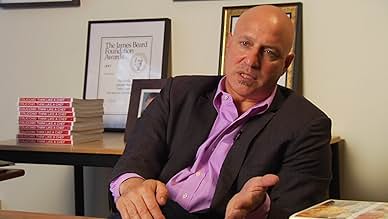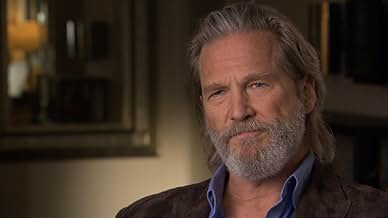IMDb RATING
6.9/10
1.2K
YOUR RATING
A documentary that investigates incidents of hunger experienced by millions of Americans, and proposed solutions to the problem.A documentary that investigates incidents of hunger experienced by millions of Americans, and proposed solutions to the problem.A documentary that investigates incidents of hunger experienced by millions of Americans, and proposed solutions to the problem.
- Awards
- 1 win & 2 nominations total
Jim McGovern
- Self
- (as James McGovern)
Featured reviews
This documentary should be seen by everyone who think that the economic system in the US is a perfect one. It also shows how much the people that actually generates wealth are exploited, just for the record bankers, financiers and the stock-market don't generate wealth, its the people that make products and services that benefit humankind that generates wealth.This of course comes from a guy that most Americans would consider a communist.
It warns about the future problems that the US might face if this type of problem is as prevalent as it depicts( I don't know all the facts behind this film ). If it is accurate then I hope for the people in the US will fix it instead of hope for the stock-market to fix it, it will not do that.
It warns about the future problems that the US might face if this type of problem is as prevalent as it depicts( I don't know all the facts behind this film ). If it is accurate then I hope for the people in the US will fix it instead of hope for the stock-market to fix it, it will not do that.
Lori Silverbush and Kristi Jacobson's documentary "A Place at the Table" is a film that every politician - indeed, every citizen - in America should be forced to sit through at least once (or as many times as it takes to get the message to effectively sink in). It makes a very persuasive case that, contrary to what most people think, hunger is a major problem in the United States, a nation that prides itself on being the wealthiest in the history of the world. Not only does the movie provide the startling statistics necessary to back that assertion up, but explains why this is the case.
Silverbush and Jacobson build their case in a meticulous, logical fashion, beginning with the common, counterintuitive fallacy that hungry people necessarily equal thin people. The movie explains how obesity and hunger often go hand in hand, thanks to the fact that, since junk food is cheaper than healthy food to purchase, the poor often fill up on empty calories rather than the nutritious ones that would actually make them healthy. This is a result of a misguided federal policy that provides subsidies for agribusinesses (as opposed to mom-and-pop farmers), who turn their grain and corn into inexpensive processed foods. Since farmers who grow fruits and vegetables work more independently of one another, they don't have the clout necessary to receive similar government support. This leads to a vicious cycle that winds up hurting poor people in both urban and rural areas where "food deserts" arise in which residents can barely find a fresh fruit or vegetable to purchase.
The movie rightly celebrates the many charities that pick up some of the slack, but it makes the case that that is simply not enough, that an entire paradigm shift may be necessary if we ever hope to solve the problem.
Ultimately, what we discover is that hunger is merely a symptom of a much greater set of problems - which are poverty, income inequality and a political system rigged to benefit the wealthy and powerful at the expense of the indigent and disconnected. Above all, the key lies in both the public and private sectors providing a living wage for their workers.
Finally, beyond all the statistics, beyond all the comments by experts and authorities on the subject, it is the voices of the parents, who can't afford to put nutritious food on the table for their children, and of the children themselves, who often go to bed hungry or malnourished, who wind up making the greatest mark on our hearts. It is their testimonials more than anything else that will hopefully move the rest of us to action.
A must-see film.
Silverbush and Jacobson build their case in a meticulous, logical fashion, beginning with the common, counterintuitive fallacy that hungry people necessarily equal thin people. The movie explains how obesity and hunger often go hand in hand, thanks to the fact that, since junk food is cheaper than healthy food to purchase, the poor often fill up on empty calories rather than the nutritious ones that would actually make them healthy. This is a result of a misguided federal policy that provides subsidies for agribusinesses (as opposed to mom-and-pop farmers), who turn their grain and corn into inexpensive processed foods. Since farmers who grow fruits and vegetables work more independently of one another, they don't have the clout necessary to receive similar government support. This leads to a vicious cycle that winds up hurting poor people in both urban and rural areas where "food deserts" arise in which residents can barely find a fresh fruit or vegetable to purchase.
The movie rightly celebrates the many charities that pick up some of the slack, but it makes the case that that is simply not enough, that an entire paradigm shift may be necessary if we ever hope to solve the problem.
Ultimately, what we discover is that hunger is merely a symptom of a much greater set of problems - which are poverty, income inequality and a political system rigged to benefit the wealthy and powerful at the expense of the indigent and disconnected. Above all, the key lies in both the public and private sectors providing a living wage for their workers.
Finally, beyond all the statistics, beyond all the comments by experts and authorities on the subject, it is the voices of the parents, who can't afford to put nutritious food on the table for their children, and of the children themselves, who often go to bed hungry or malnourished, who wind up making the greatest mark on our hearts. It is their testimonials more than anything else that will hopefully move the rest of us to action.
A must-see film.
My wife and I downloaded this from iTunes today and were so impacted by the film. The film follows several people of different races and backgrounds, urban to the South to the mountains of Colorado. All are working (as the film goes on) but none make enough to buy enough food to be sure it will last all month. Many of them do not even qualify for food stamps/bridge cards. The fact that the poor and hungry have little lobbying impact in Washington compared to the gigantic agribusiness flood of money is clearly part of the reason we see this dilemma where the richest large nation fails miserably in keeping its working poor feed. Please see this film if you care about this issue. Many of your opinions may turn out to be misconceptions founded on stereotypes.
As for Marc Newman's criticism, the idea that charity organizations like food kitchens and food banks sponsored by churches (yes, those clips of devoted pastors and churches were kept in and were very impressive) could solve this problem is ludicrous. We are talking about 50 million people and 13 million children. As my pastor (who is VERY conservative) says... the problem is overwhelming. There is no way volunteer and charitable organizations can meet the demand, and for Mr. Newman to suggest it could makes me wonder if he has ever worked at trying to get food to the poor. Many of us have done so and we know how huge this problem is... far beyond the resources of the faith community. As was noted in this documentary, the government once before almost totally eliminated hunger (in the late 70's) when both Democrats and Republicans (including Ronald Reagan) made it a priority. The government could do it again if it desired.
As for Marc Newman's criticism, the idea that charity organizations like food kitchens and food banks sponsored by churches (yes, those clips of devoted pastors and churches were kept in and were very impressive) could solve this problem is ludicrous. We are talking about 50 million people and 13 million children. As my pastor (who is VERY conservative) says... the problem is overwhelming. There is no way volunteer and charitable organizations can meet the demand, and for Mr. Newman to suggest it could makes me wonder if he has ever worked at trying to get food to the poor. Many of us have done so and we know how huge this problem is... far beyond the resources of the faith community. As was noted in this documentary, the government once before almost totally eliminated hunger (in the late 70's) when both Democrats and Republicans (including Ronald Reagan) made it a priority. The government could do it again if it desired.
It's a national disgrace than nearly 50 million of our American neighbors live in homes that can't afford enough food. This compelling film explains why we have this problem, and, most importantly, what we can do to end it. Granted, I am biased because I fight hunger for a living, but I do think everyone in America should see this film.
The film powerfully documents the real lives of real people struggling against hunger. Each of them defy common stereotypes of hungry people.
Many Americans believe that we can end U.S. hunger one person at a time, one donated can of food at a time. They are well-meaning. But they are wrong, as this powerful film proves. When Ronald Reagan entered office in 1981, there were only a few hundred emergency feeding programs in America, most of which were traditional soup kitchens serving mostly the people who had been historically the most hungry—single men with substance abuse or mental illness problems. Yet, as a direct result of the economic policies and social service cuts set in motion by Reagan, the number of emergency feeding programs in America skyrocketed, and continued to do so even after he left office. There are now more than 40,000 such programs in America, and roughly two-thirds of them are food pantries, where parents and their children, the elderly, and working people obtain free groceries. Meanwhile, hunger has soared. The truth is that these agencies simply don't have anything close to the resources needed to meet the demand. The organization I manage, the New York City Coalition Against Hunger, found that, in 2011, close to sixty percent of the approximately 1,100 soup kitchens and food pantries in the city were forced to ration food because they lacked resources, either reducing portion size, limiting hours of operation, or turning away hungry families. These agencies are so under-funded that nearly 50 of them were forced to close in New York City in just the last few years.
This vital film proves that the only way to truly end U.S. hunger is by advocating for fundamental change that include living wage jobs and a robust government safety net.
The film powerfully documents the real lives of real people struggling against hunger. Each of them defy common stereotypes of hungry people.
Many Americans believe that we can end U.S. hunger one person at a time, one donated can of food at a time. They are well-meaning. But they are wrong, as this powerful film proves. When Ronald Reagan entered office in 1981, there were only a few hundred emergency feeding programs in America, most of which were traditional soup kitchens serving mostly the people who had been historically the most hungry—single men with substance abuse or mental illness problems. Yet, as a direct result of the economic policies and social service cuts set in motion by Reagan, the number of emergency feeding programs in America skyrocketed, and continued to do so even after he left office. There are now more than 40,000 such programs in America, and roughly two-thirds of them are food pantries, where parents and their children, the elderly, and working people obtain free groceries. Meanwhile, hunger has soared. The truth is that these agencies simply don't have anything close to the resources needed to meet the demand. The organization I manage, the New York City Coalition Against Hunger, found that, in 2011, close to sixty percent of the approximately 1,100 soup kitchens and food pantries in the city were forced to ration food because they lacked resources, either reducing portion size, limiting hours of operation, or turning away hungry families. These agencies are so under-funded that nearly 50 of them were forced to close in New York City in just the last few years.
This vital film proves that the only way to truly end U.S. hunger is by advocating for fundamental change that include living wage jobs and a robust government safety net.
A Place at the Table is a documentary that looks at hunger in America. The film follows several families and their struggles to fill their plates day after day. Band-aid fixes are just not cutting it. The problem of hunger in America is just getting worse. The film is a sobering look at the reality that many Americans face.
Did you know
- TriviaThe original title for this documentary was "Hungry in America."
- ConnectionsFeatured in Moyers & Company: United States of ALEC: A Follow-Up (2013)
Details
- Release date
- Country of origin
- Official site
- Language
- Also known as
- Mesto za stolom
- Filming locations
- Collbran, Colorado, USA(main location)
- Production companies
- See more company credits at IMDbPro
Box office
- Gross US & Canada
- $231,378
- Opening weekend US & Canada
- $92,257
- Mar 3, 2013
- Gross worldwide
- $231,378
- Runtime
- 1h 24m(84 min)
- Color
- Aspect ratio
- 1.78 : 1
Contribute to this page
Suggest an edit or add missing content



































